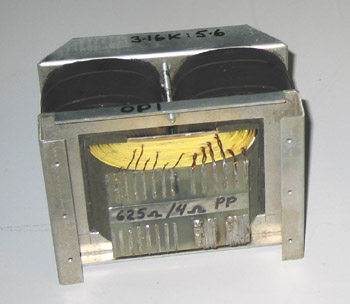-
I found myself in the possession of several NOS Super Reverb (and other) output transformers manufactured by Schumacher. These things are in unreal condition, and I wanted to take a look at the winding of one of them.
I took some photos which seem to show the winding layers pretty clearly and was wondering if any of you can make out what the interleaving pattern is from these. I guess I was a bit surprised to see what looks like any interleaving at all.


I found myself in the possession of several NOS Super Reverb (and other) output transformers manufactured by Schumacher. These things are in unreal condition, and I wanted to take a look at the winding of one of them.
I took some photos which seem to show the winding layers pretty clearly and was wondering if any of you can make out what the interleaving pattern is from these. I guess I was a bit surprised to see what looks like any interleaving at all.





Comment